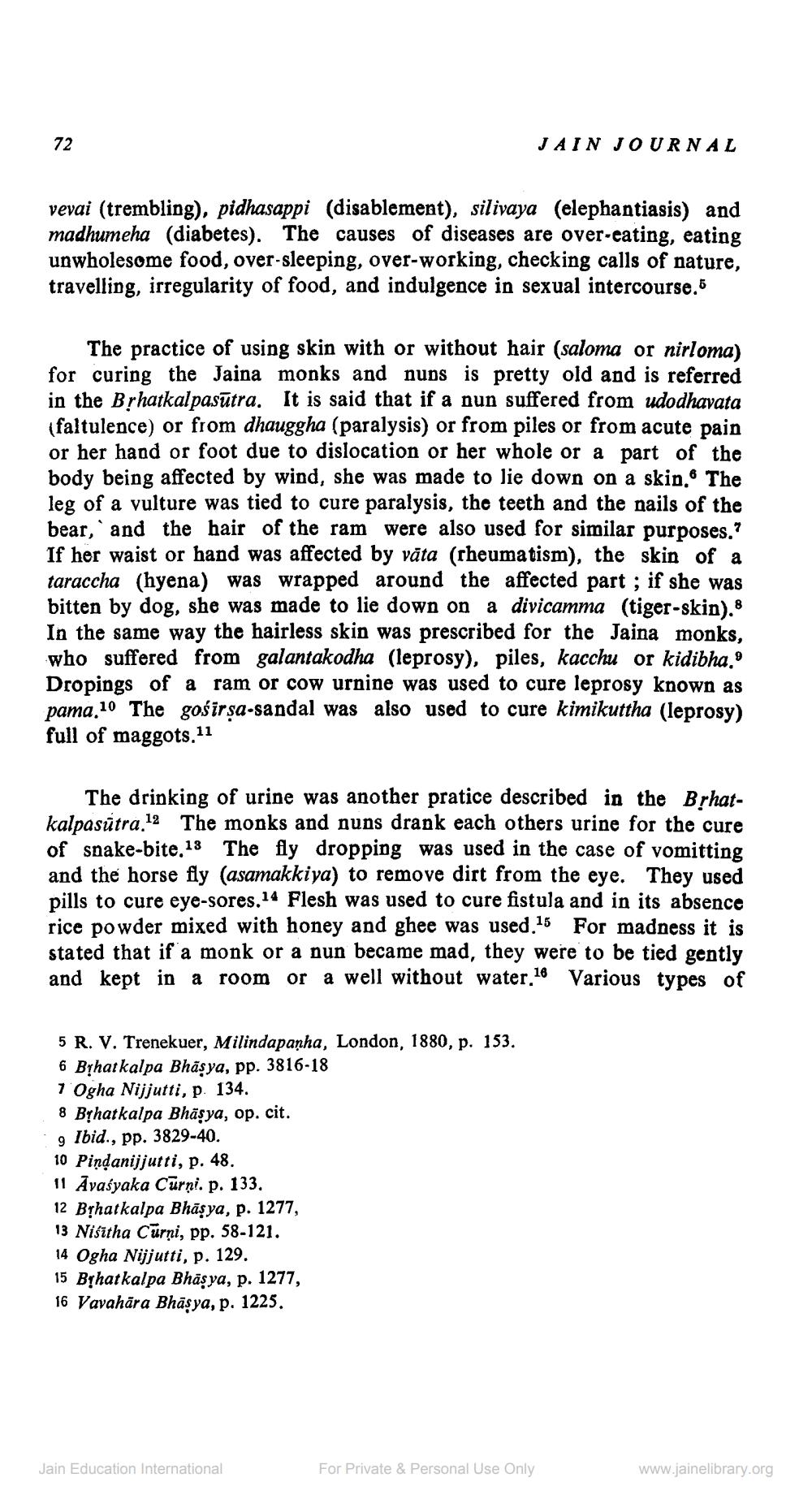________________
72
JAIN JOURNAL
vevai (trembling), pidhasappi (disablement), silivaya (elephantiasis) and madhumeha (diabetes). The causes of diseases are over-eating, eating unwholesome food, over-sleeping, over-working, checking calls of nature, travelling, irregularity of food, and indulgence in sexual intercourse.
The practice of using skin with or without hair (saloma or nirloma) for curing the Jaina monks and nups is pretty old and is referred in the Brhatkal pasūtra. It is said that if a nun suffered from udodhavata (faltulence) or from dhauggha (paralysis) or from piles or from acute pain or her hand or foot due to dislocation or her whole or a part of the body being affected by wind, she was made to lie down on a skin. The leg of a vulture was tied to cure paralysis, the teeth and the nails of the bear, and the hair of the ram were also used for similar purposes.? If her waist or hand was affected by vāta (rheumatism), the skin of a taraccha (hyena) was wrapped around the affected part; if she was bitten by dog, she was made to lie down on a divicamma (tiger-skin). In the same way the hairless skin was prescribed for the Jaina monks, who suffered from galantakodha (leprosy), piles, kacchu or kidibha.9 Dropings of a ram or cow urnine was used to cure leprosy known as pama.10 The gośīrşa-sandal was also used to cure kimikuttha (leprosy) full of maggots.11
The drinking of urine was another pratice described in the Brhatkalpasūtra 12 The monks and nuns drank each others urine for the cure of snake-bite.13 The fly dropping was used in the case of vomitting and the horse fly (asamakkiya) to remove dirt from the eye. They used pills to cure eye-sores. 14 Flesh was used to cure fistula and in its absence rice powder mixed with honey and ghee was used.15 For madness it is stated that if a monk or a nun became mad, they were to be tied gently and kept in a room or a well without water.16 Various types of
5 R. V. Trenekuer, Milindapanha, London, 1880, p. 153. 6 Byhatkalpa Bhasya, pp. 3816-18 1 Ogha Nijjutti, p. 134. 8 Byhatkalpa Bhasya, op. cit. g Ibid., pp. 3829-40. 10 Pindanijjutti, p. 48. 11 Avašyaka Curni. p. 133. 12 Brhatkalpa Bhāşya, p. 1277, 13 Niśītha Cūrni, pp. 58-121. 14 Ogha Nijjutti, p. 129. 15 Byhatkalpa Bhasya, p. 1277, 16 Vavahāra Bhasya, p. 1225.
Jain Education International
For Private & Personal Use Only
www.jainelibrary.org




